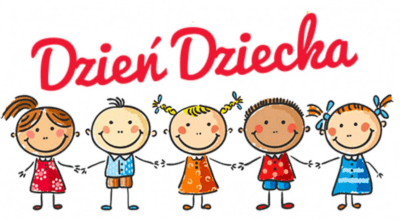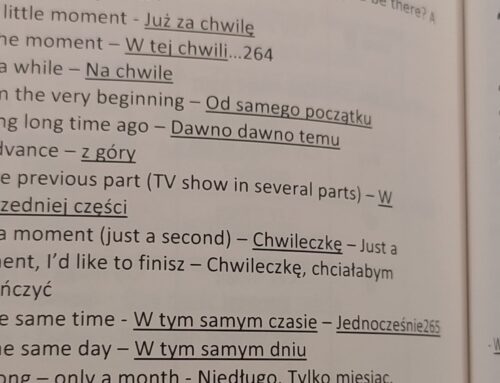By Kate Jonska, Teacher in Warsaw
Every country has its own holidays and traditions, and ever since coming to Poland, I experienced just how many Poland has! As a result, there is always something worth celebrating and something to look forward to. So, if you like to get immersed in new culture, and learn about its ins and outs, this is the perfect article for you.
As there are so many interesting traditions here in Poland, in this article I will present the ones I personally find the most interesting and noteworthy.
So, without further ado, let’s start off with January. In Poland January 1st is the new year but this is a given as every country that starts off the new year on January 1st will have this date in their calendar. However, what Poland celebrates in January is ‘Epiphany’ or ‘Trzech Króli’ and this takes place on January 6th. If you have ever walked around Poland and see the initials ‘K M B’ or ‘C M B’ on doors and wondered why this is well, here people write with chalk (purchased from a church) above the entrance of your home. These letters have two meanings. One; they represent the initials of Caspar, Melchior, and Balthazar (Kacper, Melchior, Baltazar) and two; it’s also the abbreviation of the Latin phrase Christus mansionem benedicat (May Christ bless this house). On this day, stores are closed countrywide.
 Moving on down the calendar we have February and march and yet again in February there is a celebration that is a worldwide known celebration which falls on the 14th of February, Valentines Day, but this is not as interesting compared to the remaining traditions in this time of year. For instance, if you are a foodie then you will know that in the UK there is pancake day, however here in Poland we have ‘Fat Thursday’ or more commonly known as ‘Tłusty Czwartek’ which falls on the 16th of February. On this day people will bring in (usually fresh) pączki and / or faworki into school and / or work as a way of feeling the spirits of this festive day together.
Moving on down the calendar we have February and march and yet again in February there is a celebration that is a worldwide known celebration which falls on the 14th of February, Valentines Day, but this is not as interesting compared to the remaining traditions in this time of year. For instance, if you are a foodie then you will know that in the UK there is pancake day, however here in Poland we have ‘Fat Thursday’ or more commonly known as ‘Tłusty Czwartek’ which falls on the 16th of February. On this day people will bring in (usually fresh) pączki and / or faworki into school and / or work as a way of feeling the spirits of this festive day together.
Time for Spring!
Now the winter season has ended it is time for Spring!
Spring starts with a number of shopping Sundays and these fall on the following days and dates:
- April 2
- April 30
- June 25
To start the month of March off, here in Poland we have three significant days which are self-explanatory so I will not go into much detail about them, but nonetheless they are worth the acknowledgement. So, as follows on March 8th we have Women’s day (Dzień Kobiet), and it is common for girls and women to receive tulips on this day from friends, family and even from their co-workers. Then two days later on March 10th we have Men’s Day (Dzień Mężczyzny), however this is not celebrated as much as Dzień Kobiet, and lastly here in Poland St. Patrick’s Day (Dzień Świętego Patryka) is also celebrated on the 17th March.
No, let’s move onto some more traditions that I personally find interesting that are celebrated in the Spring season in Poland (as well as all over the world). As Poland is a religious country and may people still are Roman Catholics, the Easter period is a significant one in Poland, and it is a time where family’s come together and celebrate Easter together and where many individuals go to Church. However, not only this but people also paint eggs, have traditional Easter food and come together as a whole to embrace this Easter season.
 Palm Sunday (Niedziela Palmowa) starts off our Easter journey and this falls on the 2nd April this year, and on this day many Poles will go to Church and when they do they bring with them (dry) flowers, twigs and ‘palms’ (palmy wielkanocne). Then in the following days, just like in any Easter celebrating religion, we have Good Friday (Wielki Piątek), and this year it fell on the 7th April. As our Easter journey continues, we come to the day itself, Easter Sunday, and this year it fell on the 9th April. This initially finishes off the Easter week, but there is one more date that is an interesting one and this is the Monday following Easter Sunday. This year it was 10th April and it brings Easter an end.
Palm Sunday (Niedziela Palmowa) starts off our Easter journey and this falls on the 2nd April this year, and on this day many Poles will go to Church and when they do they bring with them (dry) flowers, twigs and ‘palms’ (palmy wielkanocne). Then in the following days, just like in any Easter celebrating religion, we have Good Friday (Wielki Piątek), and this year it fell on the 7th April. As our Easter journey continues, we come to the day itself, Easter Sunday, and this year it fell on the 9th April. This initially finishes off the Easter week, but there is one more date that is an interesting one and this is the Monday following Easter Sunday. This year it was 10th April and it brings Easter an end.
This day is known as Easter Monday (Poniedziałek Wielkanocny) or “Wet Monday” (Lany Poniedziałek). On this day people soak each other with water by pouring water on each other.
Now that Easter has come to an end, there are two very significant days in May that occur in Poland and it is very unlikely that you will go to work on these days, and as a result depending on what days these dates fall in the year you may get a very nice long weekend to relax. These are days to remember the history of Poland and this beloved ‘holiday’ is referred to as ‘Majowka’. This is in the first week of May and the days off work are 1st May, this is known as Labor Day, and is followed by 3rd May, which is commonly known as Constitution Day. Until I moved to Poland I was unaware of this lovely May break 😊.
 In England as we all know Mother’s Day falls in March, however here in Poland it falls on the 26th May which I found interesting, and also Father’s Day is not as spoken about in Poland compared to Mother’s Day. Another day like this that I found interesting is Child’s Day (c as in England we do not have this whereas Poland, and a few other selected countries do and this falls on the 1st June. So, I wonder to why England does not have this tradition.
In England as we all know Mother’s Day falls in March, however here in Poland it falls on the 26th May which I found interesting, and also Father’s Day is not as spoken about in Poland compared to Mother’s Day. Another day like this that I found interesting is Child’s Day (c as in England we do not have this whereas Poland, and a few other selected countries do and this falls on the 1st June. So, I wonder to why England does not have this tradition.
Lastly, the date I want to finish the Spring season on is, June 8th, Corpus Christi / Boże Ciało. However, even though here I say that this public holiday is on the 8th June, it is not always on this date but rather always on a Thursday in June, so many people will attempt to take the Friday off work to have a nice lovely extend weekend, just as they do in May.
On this day, it is unlikely that your work will be open, and stores will be closed as this is a public holiday in Poland. However, some people will opt to go to Church on this day as this day is “a celebration in honour of the Blessed Sacrament, its main point is the procession” and also “shows the presence of Christ and the Church.” However, for me, I see this as a day off and a public holiday.
That’s it for the first half of the year! We’ll cover Polish holidays during the second half of the year soon.
Ready to head to Poland? Why not explore our program page or submit an application?




